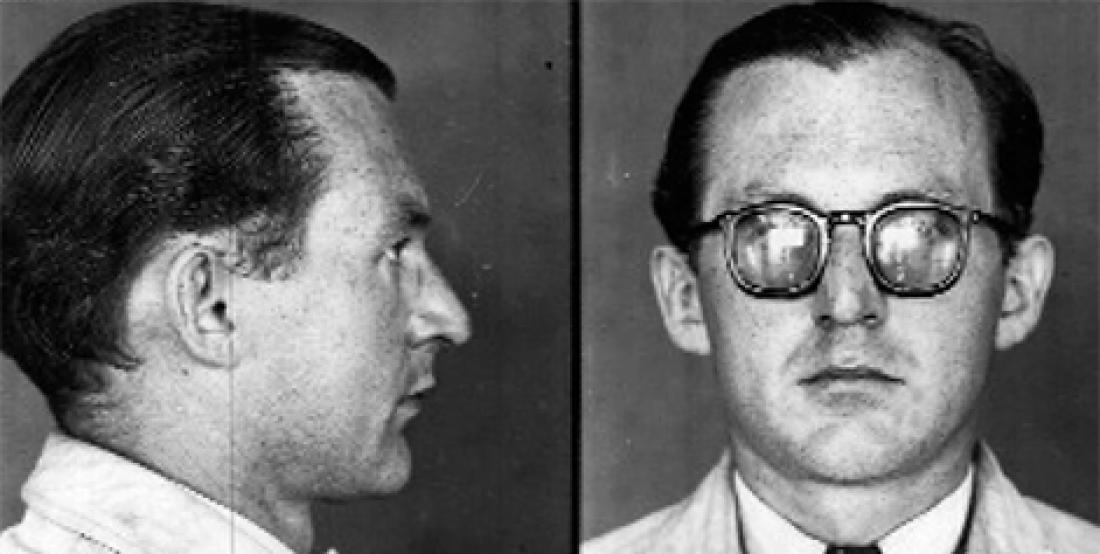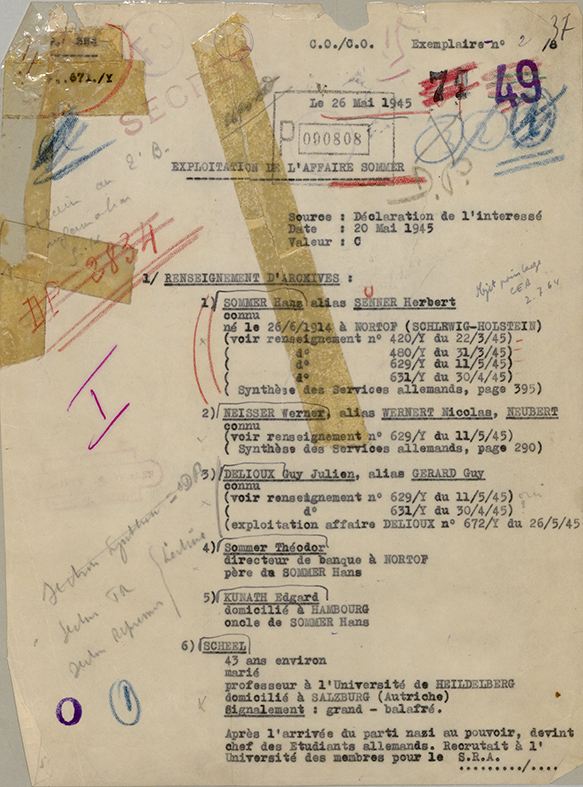Hans Sommer, from SD to Stasi

The career of Hans Sommer, from the SS to the Stasi via the German army and the SD, illustrates a clear fact: German agents were very well trained. Real intelligence professionals, several of them recycled their experience after the war by working for intelligence agencies, which were always looking for talent to exploit.
Hans Sommer was born on 26 June 1914 in Nortorf, Schleswig-Holstein. In 1931, he joined the Hitler Youth (Hitlerjugend). The following year, he began working for his uncle's import-export company in Hamburg. He was admitted to the SS on 1 December 1932 and the Nazi Party on 1 February 1933. Matriculating at the University of Heidelberg to study foreign languages, including English, French and Spanish, he took advantage of his course to travel to Great Britain, Switzerland and Sweden.
From the army to the SS
The young student had an interesting profile. His studies led to his first contact with the SD, which was recruiting from the best universities. In October 1936, he was called up and allocated to the signals battalion of the 2nd motorised infantry division in Pomerania. In December, he was sent to Halle for a course in English. Discharged from his military obligations in January 1939 with the rank of reserve sub-lieutenant (Leutnant), he was recalled the following August and posted to the signals battalion of the 8th army corps in Breslau, with which he took part in the Poland campaign. In March 1940 he contacted SS captain (SS-Hauptsturmführer) Helmuth Loohs of the SD foreign political intelligence service (SD-Ausland), whom he had met in Heidelberg and Pasewalk. Sommer joined the SD with the equivalent of his military rank (SS-Untersturmführer) and was posted at the end of May 1940 to group VI, tasked with intervening in France. In June, he was sent to Paris with an SD intervention commando unit (Einsatzkommando) led by commander (SS-Sturmbannführer) Dr Knochen.
A specialist in underhand tricks
Sommer set up a branch responsible primarily for English and American issues. Four agents worked under him. Two of them, Keller and Stenger, both Benedictine monks, monitored relations between the senior clergy and the Vatican, such as the links between Britain's ambassador to Spain, Sir Samuel Hoare, and the Benedictines at the monastery of Montserrat, near Barcelona. Another agent, Reichl, a former Freemason, collected information on relations between French lodges and their British and American counterparts. Finally the fourth, Dr Fischer, a former German emigrant, was quickly sent back to Germany
In March 1941, working via Keller, Sommer made contact with Eugène Deloncle, the former head of La Cagoule and leader of the collaborationist party MSR (Mouvement social révolutionnaire - Revolutionary Social Movement). On the night of 2 to 3 October, seven Parisian synagogues were targeted for attacks by MSR with fuel tanks filled with explosives... supplied by Sommer. In a confidential memo, SS Lieutenant-Colonel (Obersturmbannführer) Dr Knochen specified that: ”It is fairly well established that those carrying out the attacks were radical French anti-Semites who, as was the case with the Marseille synagogue explosion, now want to work in a similar way in Paris. This is thus a purely French affair, and the French police are responsible for investigating it.”
Sommer was nevertheless arrested by the Germans. He received a symbolic sentence of 10 years without promotion and was sent back to Berlin. He was then posted to Marseille as general consul under the pseudonym of Herbert Senner, responsible for monitoring the Spanish, Italian and Swiss borders. In contact with members of the Collaboration group and former MSR members, he also frequented the Marseille underworld, recruiting many informers among them.
From the SS to the Stasi
Forced to return to Germany in August 1944, he was then posted to Italy. In Milan and then San Remo, he checked French people seeking to cross clandestinely into France. In May 1945 he crossed the French border himself through the mountains. Arrested near Brigue, he was released the following morning and taken to Nice. Here he made contact with the French services. Sent to Spain, he was arrested while crossing the border and interned at the Miranda de Ebro camp. Finally released after the intervention of the former Spanish consul in Spain, he reached Madrid and began working for the French services. But the American OSS wanted him, and he was brought back to Germany, interned at Dachau and then sent back to France at the request of the military courts. Interned in Marseille, he was sentenced to a year in prison, but released almost immediately. Back in Germany, he worked for the Gehlen organisation and then the BND.
The French Direction de la surveillance du territoire (Directorate of Territorial Surveillance) monitored him until the 1960s. He was hired by an Italian arms company, Isotta Frachetti. But he was already working for the East German services. His Stasi file is impressive: over 22,000 pages.
François le Goarant de Tromelin
Researcher, specialist in the Milice and the Occupation
FOR MORE INFORMATION
Hans Sommer's complete file is conserved under the record number GR 28 P 9 1468 and can be consulted in the reading room.


